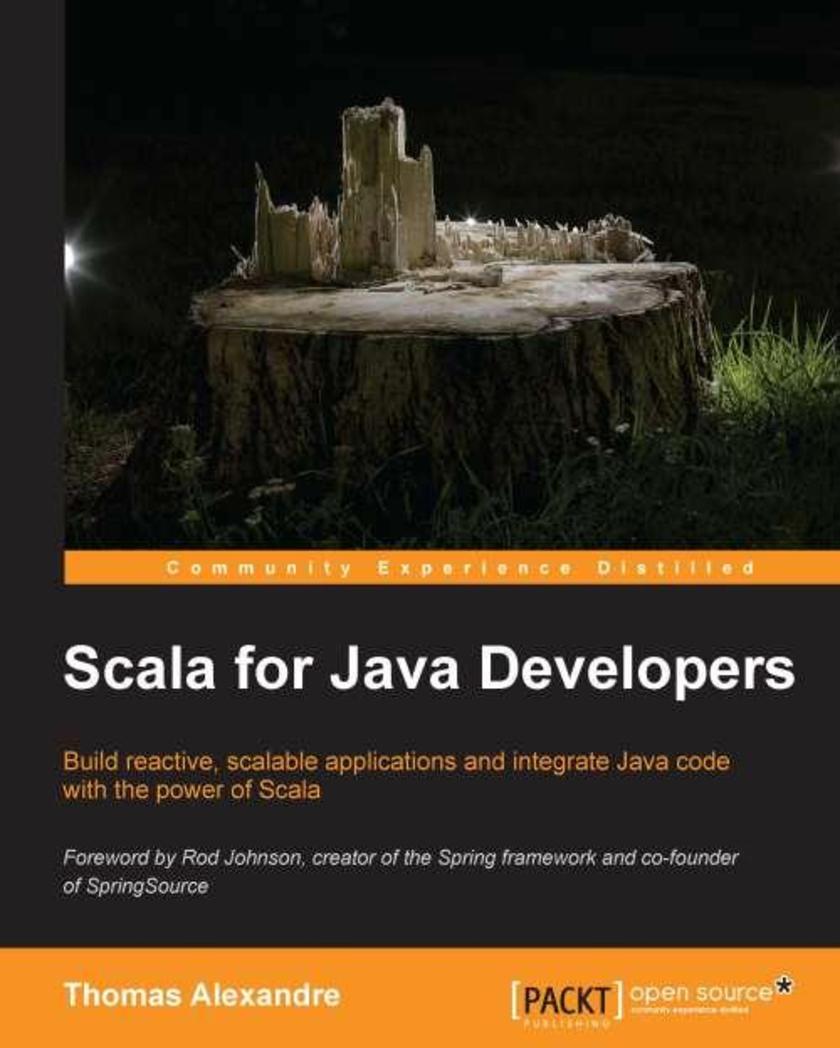
Scala for Java Developers
¥80.65
This stepbystep guide is full of easytofollow code taken from realworld examples explaining the migration and integration of Scala in a Java project. If you are a Java developer or a Java architect, working in Java EEbased solutions and want to start using Scala in your daily programming, this book is ideal for you. This book will get you up and running quickly by adopting a pragmatic approach with realworld code samples. No prior knowledge of Scala is required.
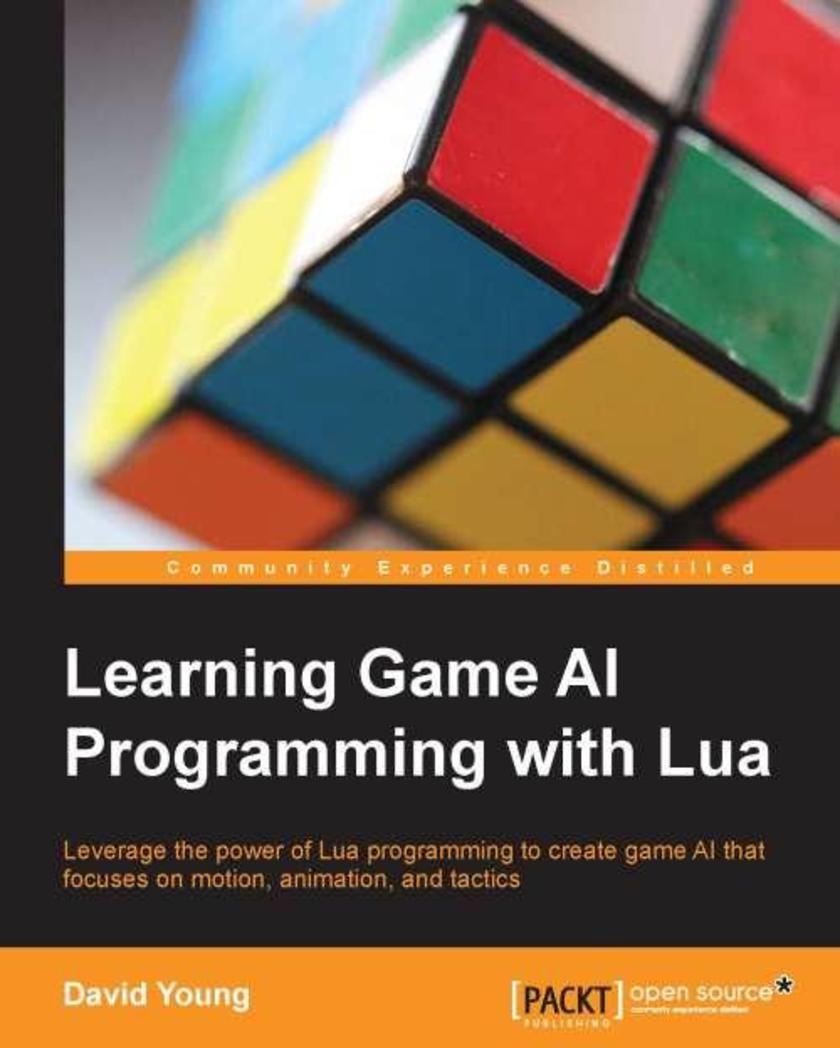
Learning Game AI Programming with Lua
¥80.65
If you are a game developer or a general programmer who wishes to focus on programming systems and techniques to build your game AI without creating low-level interfaces in a game engine, then this book is for you. Knowledge of C++ will come in handy to debug the entirety of the AI sandbox and expand on the features present within the book, but it is not required.
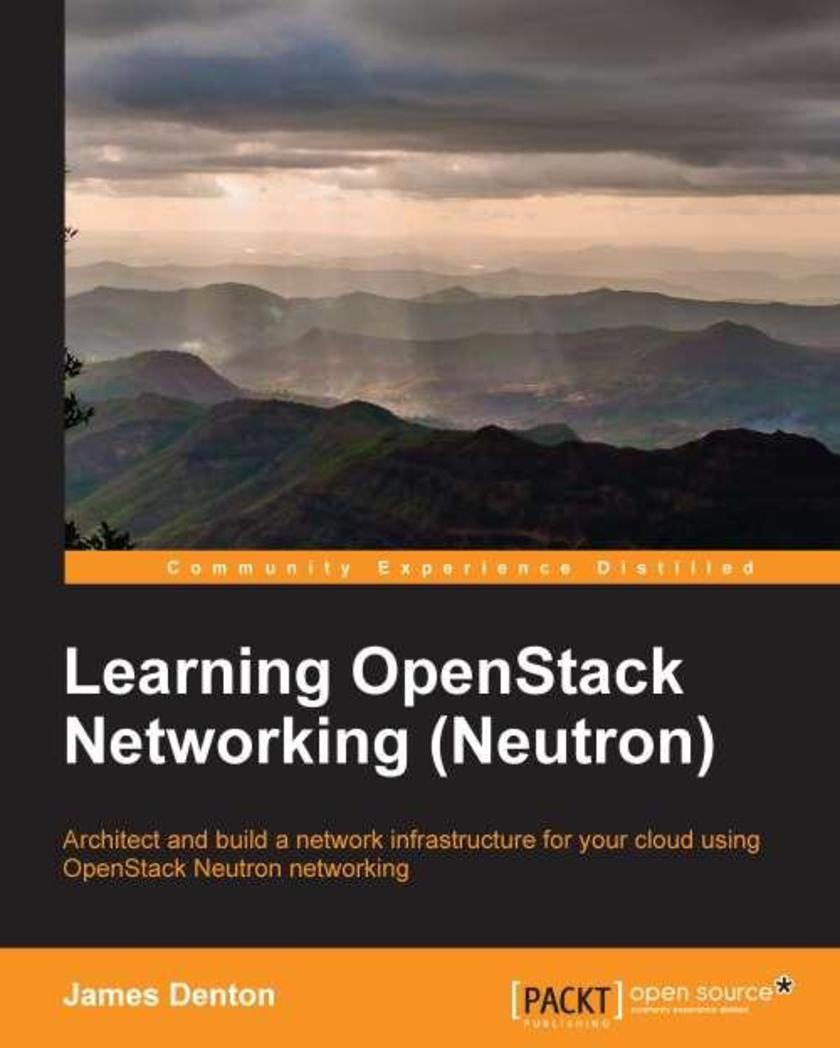
Learning OpenStack,Networking (Neutron)
¥80.65
If you are an OpenStack-based cloud operator with experience in OpenStack Compute and nova-network but are new to Neutron networking, then this book is for you. Some networking experience is recommended, and a physical network infrastructure is required to provide connectivity to instances and other network resources configured in the book.
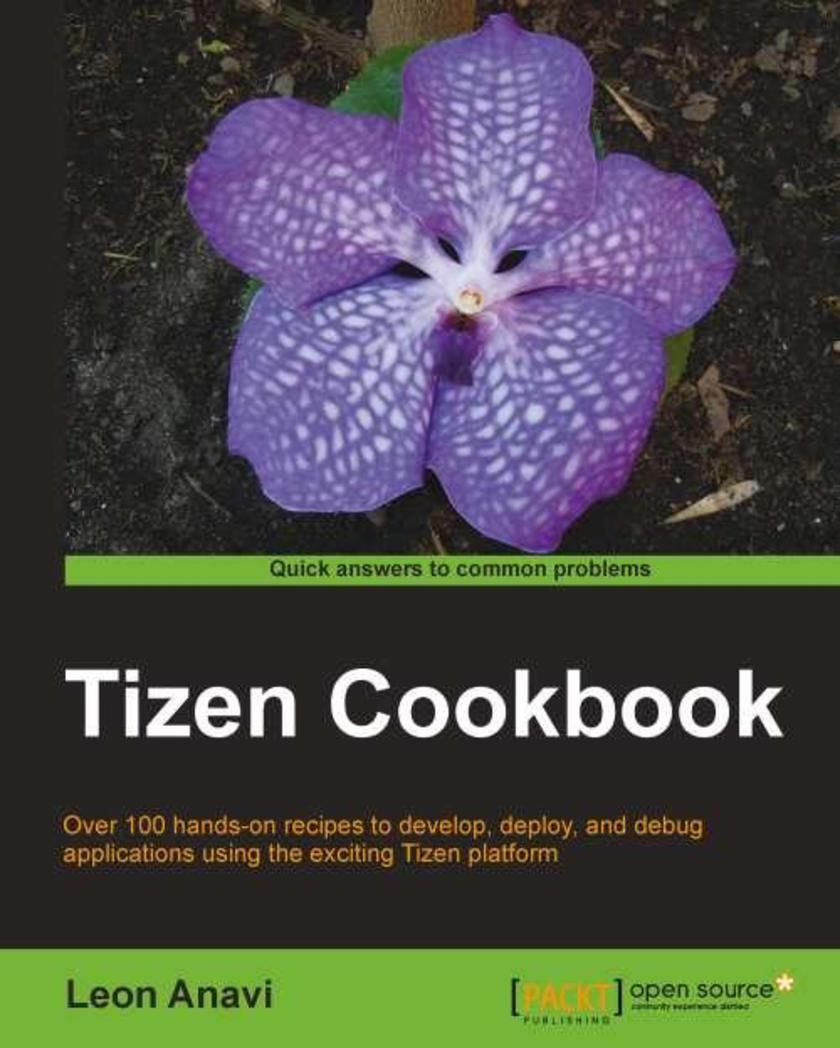
Tizen Cookbook
¥80.65
If you want to enter the fascinating world of Tizen and learn how to develop engaging and successful applications then this book is for you. It'll benefit novices and experienced application developers alike.
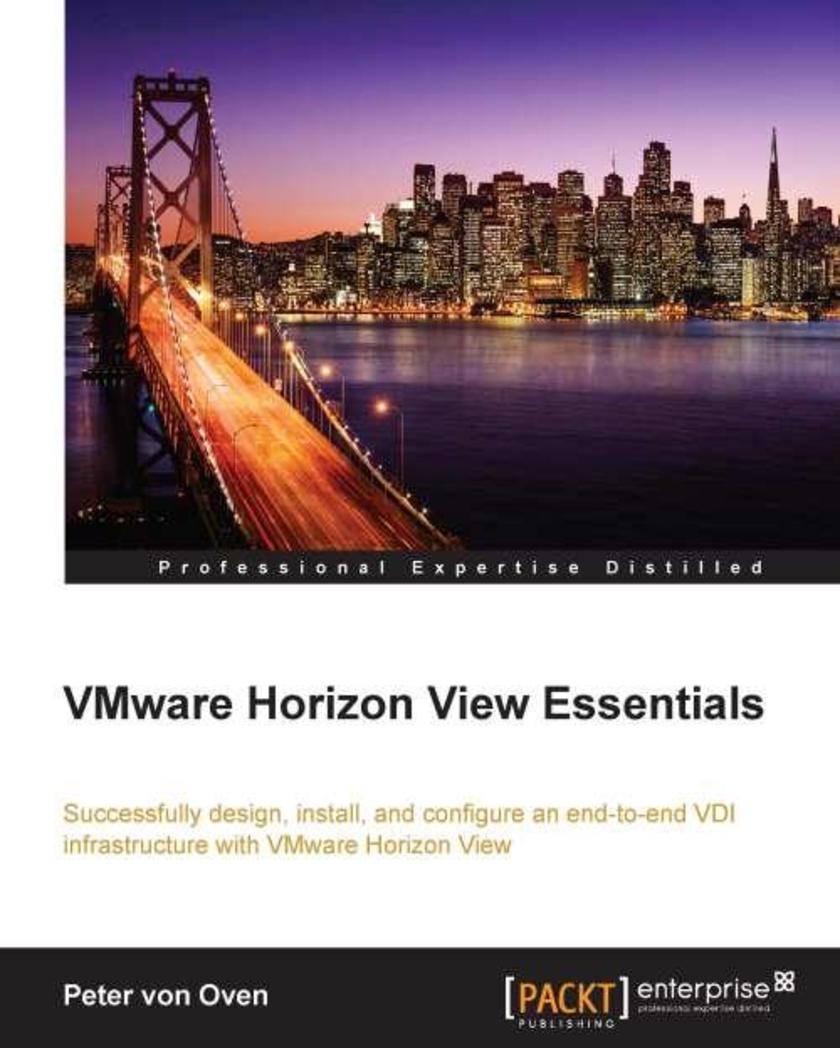
VMware Horizon View Essentials
¥80.65
If you are a desktop administrator or an end user of a computing project team looking to speed up to the latest VMware Horizon View solution, then this book is perfect for you. It is your ideal companion to deploy a solution to centrally manage and virtualize your desktop estate using Horizon View 6.0.
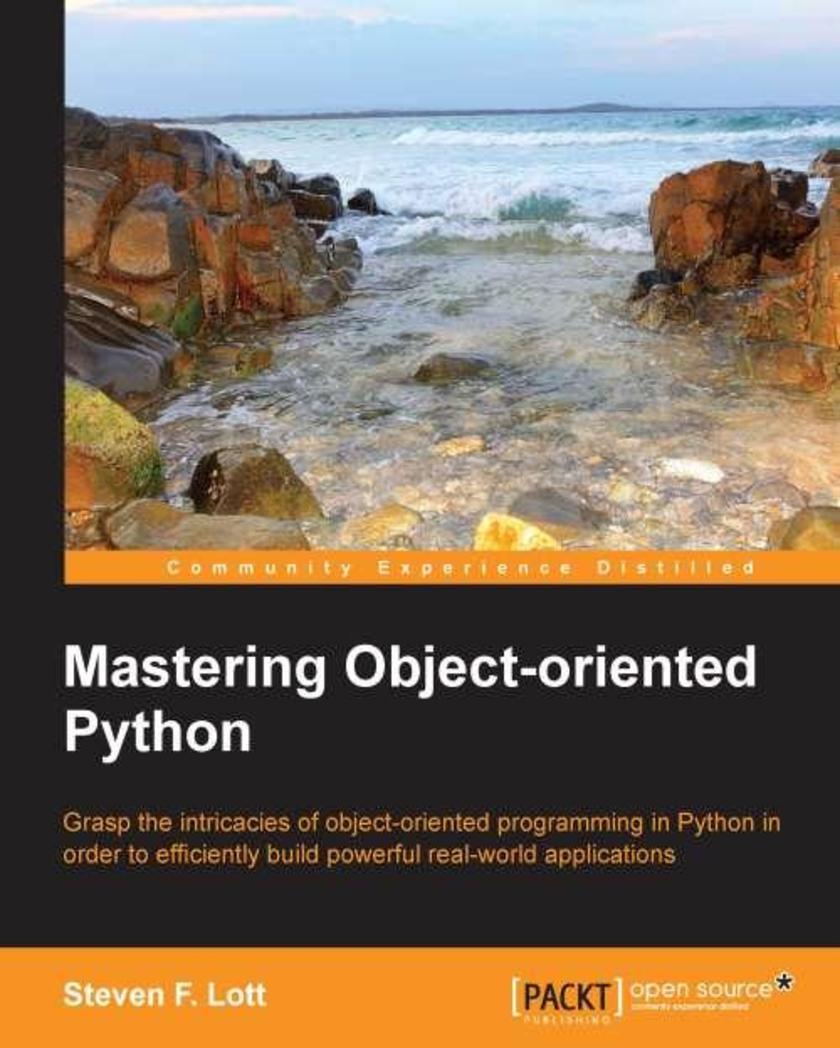
Mastering Object Oriented Python
¥80.65
This book follows a standard tutorial approach with approximately 750 code samples spread through the 19 chapters. This amounts to over 5,900 lines of code that illustrate each concept. This book is aimed at programmers who have already learned the basics of objectoriented Python and need to write more sophisticated, flexible code that integrates seamlessly with the rest of Python. This book assumes a computer science background, with experience of common Python design patterns.
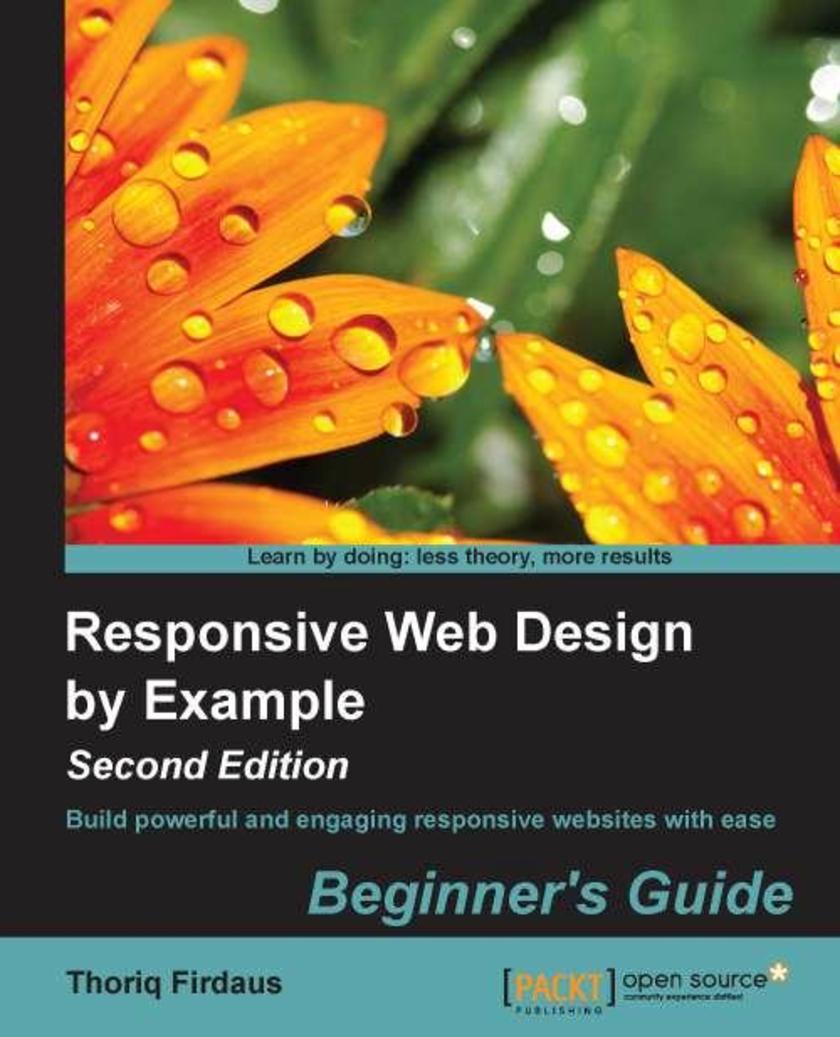
Responsive Web Design by Example : Beginner's Guide - Second Edition
¥80.65
This is the ideal reference for both new and existing web developers who want to be able to augment their skills and showcase their content in a truly professional manner.
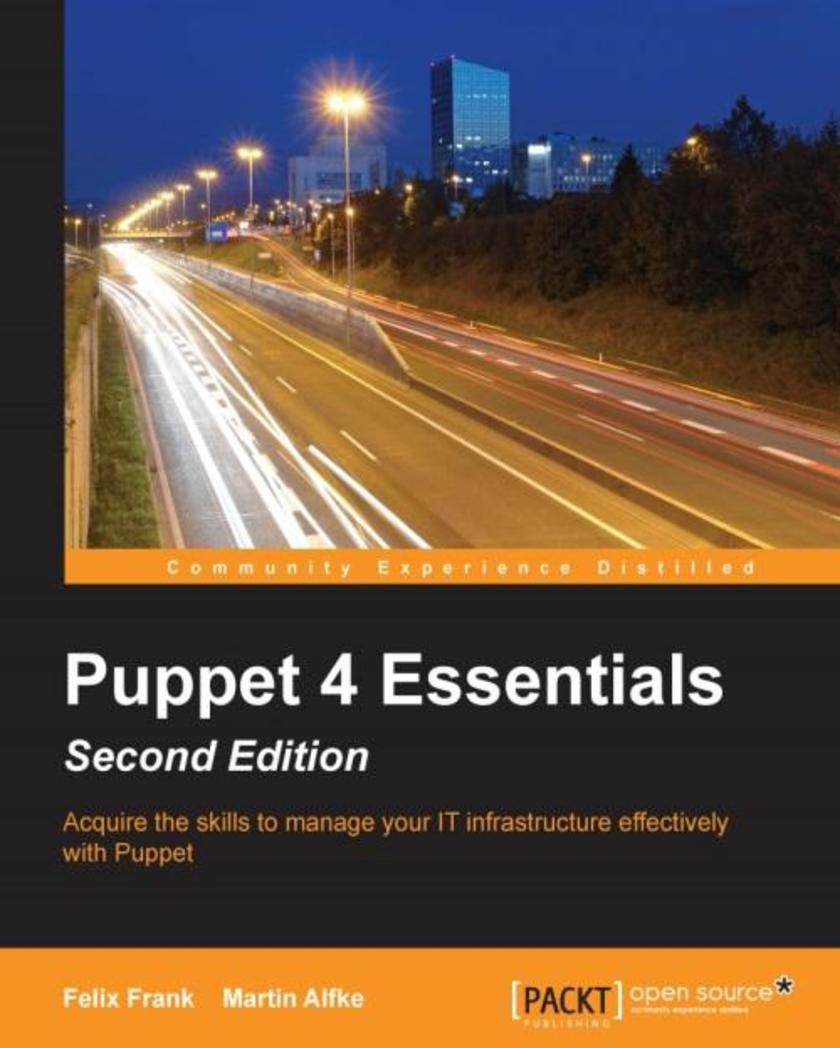
Puppet 4 Essentials - Second Edition
¥80.65
Acquire skills to manage your IT infrastructure effectively with Puppet About This BookBreeze through Puppet 4’s key features and performance improvements to bring real advantage to your IT infrastructureDiscover Puppet best practices to help you avoid common mistakes and pitfallsBlitz through easy-to-follow examples to get to grips with Puppet and succeed with everyday IT automationWho This Book Is ForIf you're an experienced IT professional and a new Puppet user, this book will provide you with all you need to know to go from installation to advanced automation in no time at all. Get a rapid introduction to the essential topics and then tackle Puppet for advanced automation.What You Will LearnWrite and employ individual Puppet manifestsUnderstand how Puppet implements system abstractionDeploy the Puppet master and agentsLeverage and extend Facter to summarize your systems Create modular and reusable Puppet code Extend your code base with publicly available Puppet modules Use the modern features of Puppet 4 Separate logic from data using Hiera In Detail Puppet is a configuration management tool that allows you to automate all your IT configurations, giving you control over what you do to each Puppet Agent in a network, and when and how you do it. In this age of digital delivery and ubiquitous Internet presence, it's becoming increasingly important to implement scalable and portable solutions, not only in terms of software, but also the systems that run it. The free Ruby-based tool Puppet has established itself as the most successful solution to manage any IT infrastructure. Ranging from local development environments through complex data center setups to scalable cloud implementations, Puppet allows you to handle them all with a unified approach. Puppet 4 Essentials, Second Edition gets you started rapidly and intuitively as you’ll put Puppet’s tools to work right away. It will also highlight the changes associated with performance improvements as well as the new language features in Puppet 4. We’ll start with a quick introduction to Puppet to get you managing your IT systems quickly. You will then learn about the Puppet Agent that comes with an all-in-one (AIO) package and can run on multiple systems. Next, we’ll show you the Puppet Server for high-performance communication and passenger packages. As you progress through the book, the innovative structure and approach of Puppet will be explained with powerful use cases. The difficulties that are inherent to a complex and powerful tool will no longer be a problem for you as you discover Puppet's fascinating intricacies. By the end of the book, you will not only know how to use Puppet, but also its companion tools Facter and Hiera, and will be able to leverage the flexibility and expressive power implemented by their tool chain. Style and approach This quick learning guide for Puppet follows a practical approach, starting with some basic commands that you can use from the shell right away. It comprises a series of examples that will get you familiar with the most important aspects of Puppet in a flash.
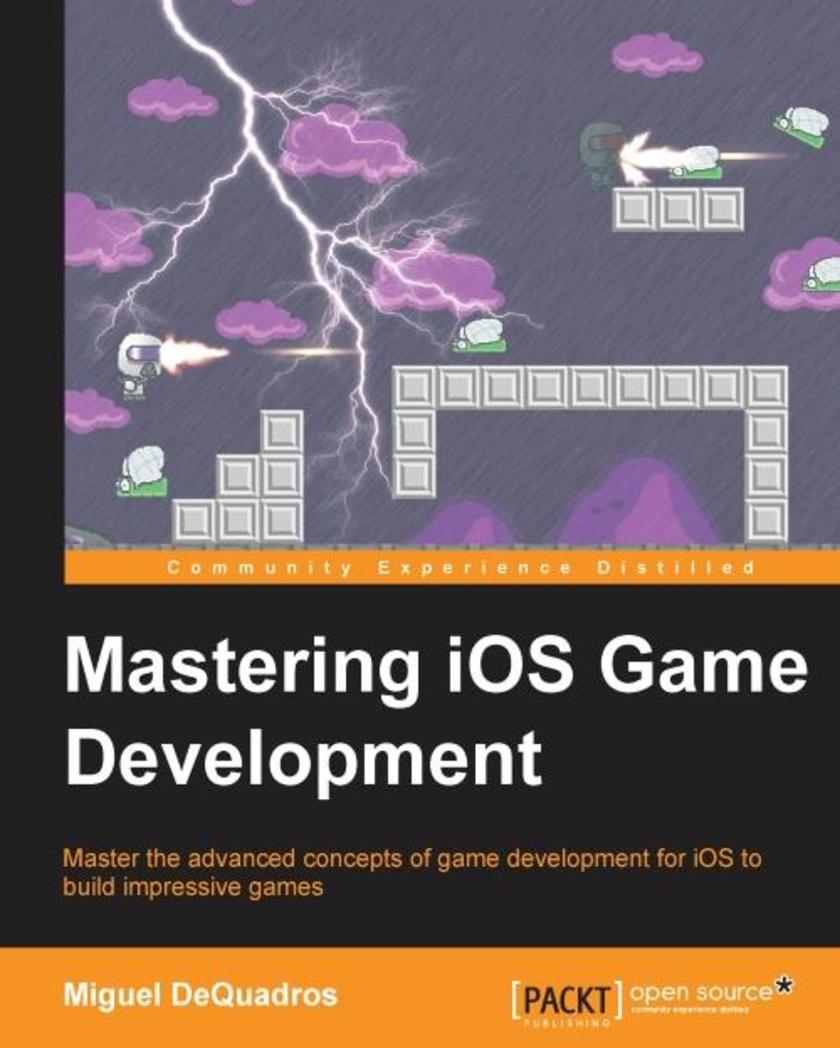
Mastering iOS Game Development
¥80.65
Master the advanced concepts of game development for iOS to build impressive games About This Book Create a complete game with advanced techniques through the course of the book using in-depth, hands-on instructions Learn how to multi-task and improve performance optimization in your game playing experience The author, Miguel, has 11 years of iOS game development using xcode and has released over 10 games to the Apple AppStoreMaster player movement using touch controls as well as discuss motion controls Who This Book Is For This book is for those who have created an iOS game already and want to hone their skills. A reasonable level of knowledge and an understanding of the core elements and applications would be helpful. What You Will Learn Blast off and start developing fun games Optimize the assets for the best performance in the game app Master player movement using touch controls as well as discuss motion controls Perform bug Squashing by testing and debugging Design interesting various characters and enemies for your game Test your game on both, the simulator on the computer and on real devices Tweak and fine tune the code and graphics before the release of your app Uncover some awesome new gameplay by adding in multiplayer elements, to get more people playing together In Detail iOS is an operating system for Apple manufactured phones and tablets. Mobile gaming is one of the fastest-growing industries, and compatibility with iOS is now becoming the norm for game developers. SpriteKit is part of the native SDK from Apple, and enables developers to make simple entry into game development without unnecessary overhead and a long learning process. SpriteKit also provides other functionality that is useful for games, including basic sound playback support and physics simulation. In addition, Xcode provides built-in support for SpriteKit so that you can create complex special effects and texture atlases directly in Xcode. This combination of framework and tools makes SpriteKit a good choice for games and other apps that require similar kinds of animation. Become a master in iOS game development through this fast and fun guide! In the beginning, we’ll tell you everything you need to plan and design your game. You’ll then start developing your game through step-by-step instructions using the various built-in technologies of Xcode. From there on, we discuss how to deploy your game to the iOS App Store, as well as monetizing it to make more revenue. You will also learn advanced techniques to improve your game playing experience, including better multi-tasking, improved performance optimization, battery management, and more. To end the book off, we’ll show you how to update your game with different features, then port the update to the App Store. Style and approach This book provides an easy-to-understand and fun approach to game development, with step-by-step instructions and detailed explanation of each block of code. The topics covered range from easy to advanced, so buckle up for a fast-paced ride!

Mastering MeteorJS Application Development
¥80.65
MeteorJS makes full-stack JavaScript Application Development simple – Learn how to build better modern web apps with MeteorJS, and become an expert in the innovative JavaScript framework About This Book Get your dream project up and running by building exceptional MeteorJS applications in a matter of days Learn how to integrate other JavaScript frameworks into your MeteorJS project and become an expert in full-stack development Go beyond coding and learn how to make modern design decisions – from mobile design to SEO – that drive great user experiences Who This Book Is For If you’ve already had some experience with MeteorJS but want to learn how to build even better modern web application, this book has been created for you. It provides you with a comprehensive look at one of those most important frameworks being used for the modern web today.What You Will Learn Get to grips with the basics and learn how to build a complete real-time application with MeteorJS Find out how Meteor makes full-stack development simple – become a better developer, fast. Use some of the most effective testing tools in modern web development to troubleshoot, debug and optimize your app Find out how to write custom packages for applications – so you can build your project exactly how you want Integrate React and Angular into your project Design and develop high quality animations that will give your UI the edge Build MeteorJS to serve as REST-based application and reactive system Learn how to host a MeteorJS application and then scale it for data Find out how MeteorJS can help you build for mobile Learn how to make sure you implement an effective SEO strategy in your MeteorJS application In Detail The web is dead – applications now rule our online experiences. But how are you going to build themWell, if you’ve been paying attention, you might already have tried your hand with MeteorJS, the JavaScript framework that helps you build complete full-stack web applications that are responsive and fast with ease. Mastering MeteorJS Application Development shows you how to do even more with MeteorJS – if you’re ready to try a comprehensive course through one of the most exciting frameworks in web development today, this is the book you need. Designed to take you through the entire process of building an advanced multipage application with Meteor, you’ll be able to bring your web development ideas with surprising ease. You’ll not only learn how Meteor makes web development easier, but also how you can make using Meteor easier, by automating and simplifying tasks so you can be confident you have full control of everything in your workflow – especially everything that could go wrong. From automated testing to integrating other useful frameworks such as Angular and D3, each chapter covers a crucial element in the Meteor development process. Discover how to integrate animations using Meteor’s Blaze, to give your UI designs the edge, and explore reactive programming to effectively harness RESTful systems in your projects. You will also learn how to deploy and scale your application, two crucial aspects of modern development and vital in a changing digital environment with users expecting a product and experience that delivers. With further insights on developing for mobile – and how Meteor can help you tackle the challenges of the trend – and details on incorporating SEO strategies into your application, this book isn’t just a code tutorial – it’s about creating a product that users love. Style and approach This book is a practical guide that teaches you different ways to create custom packages, efficient client and server code, and more using Meteor. This book is packed with perfect examples and explanations to help you understand the concepts. With the perfect mix of theory and practical experience, it will equip you to become a professional MeteorJS developer.
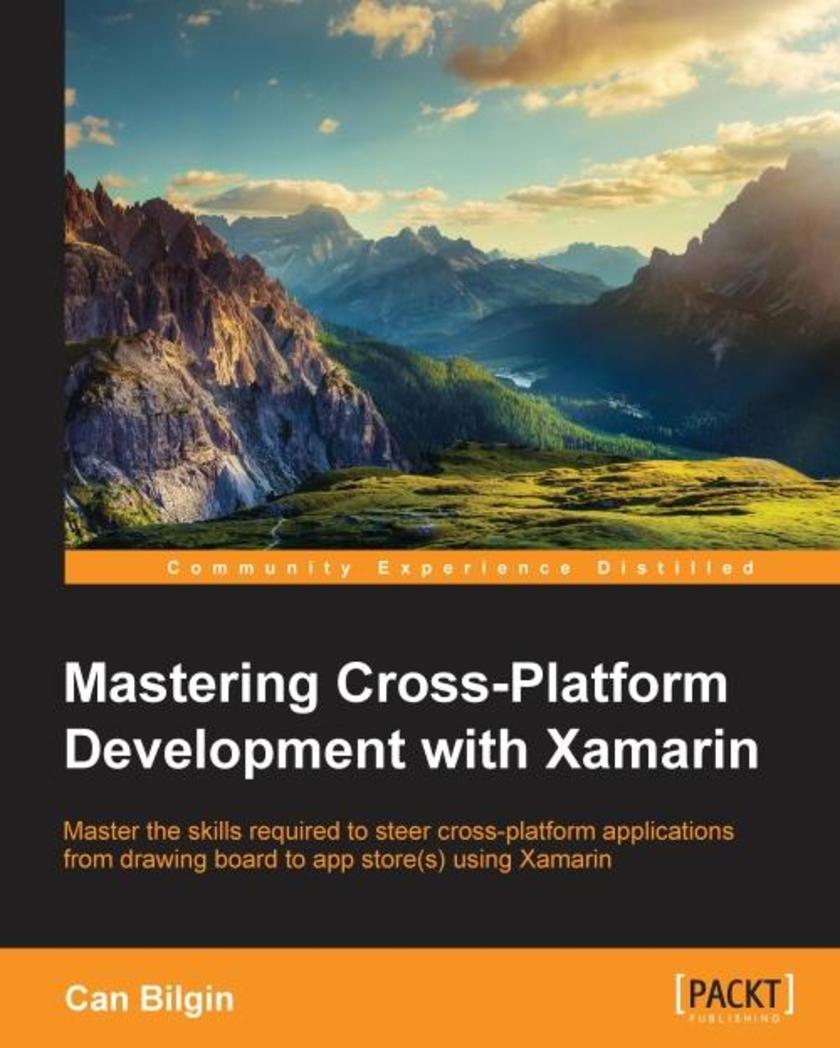
Mastering Cross-Platform Development with Xamarin
¥80.65
Master the skills required to steer cross-platform applications from drawing board to app store(s) using Xamarin About This Book Develop your Xamarin development skills with this comprehensive guide on various patterns and features so you can create elegant and high-quality applications Create adaptive user interfaces on separate platforms without compromising the user experience and platform identity Implement application lifecycle management concepts to manage and finalize cross-platform projects and efficiently collaborate with others Who This Book Is For This book is ideal for those who want to take their entry–level Xamarin mobile development skills to the next level to become the go-to person within their organization. To fully understand the patterns and concepts described, you should possess a reasonable level of knowledge about the core elements of Xamarin and cross-platform application development with it. What You Will Learn Configure your environment for cross-platform projects with Xamarin Gain memory management skills to avoid memory leaks and premature code cycles while decreasing the memory print of your applications Employ asynchronous and parallel patterns to execute non-interactive and non-blocking processes Create and use SQLite databases for offline scenarios Integrate network resources with cross-platform applications Design and implement eye-catching and reusable UI components without compromising nativity in mobile applications Manage the application lifecycle of cross-platform development projects Distribute Xamarin applications through public or private channels In Detail The main goal of this book is to equip you with the required know-how to successfully analyze, develop, and manage Xamarin cross-platform projects using the most efficient, robust, and scalable implementation patterns. This book starts with general topics such as memory management, asynchronous programming, local storage, and networking, and later moves onto platform-specific features. During this transition, you will learn about key tools to leverage the patterns described, as well as advanced implementation strategies and features. The book also presents User Interface design and implementation concepts on Android and iOS platforms from a Xamarin and cross-platform perspective, with the goal to create a consistent but native UI experience. Finally, we show you the toolset for application lifecycle management to help you prepare the development pipeline to manage and see cross-platform projects through to public or private release. Style and approach This is a comprehensive guide on various Xamarin features and patterns. Each topic is explained and demonstrated with code samples, which are revised in each section in an iterative manner and analyzed with available diagnostic tools to demonstrate the benefits of different patterns.
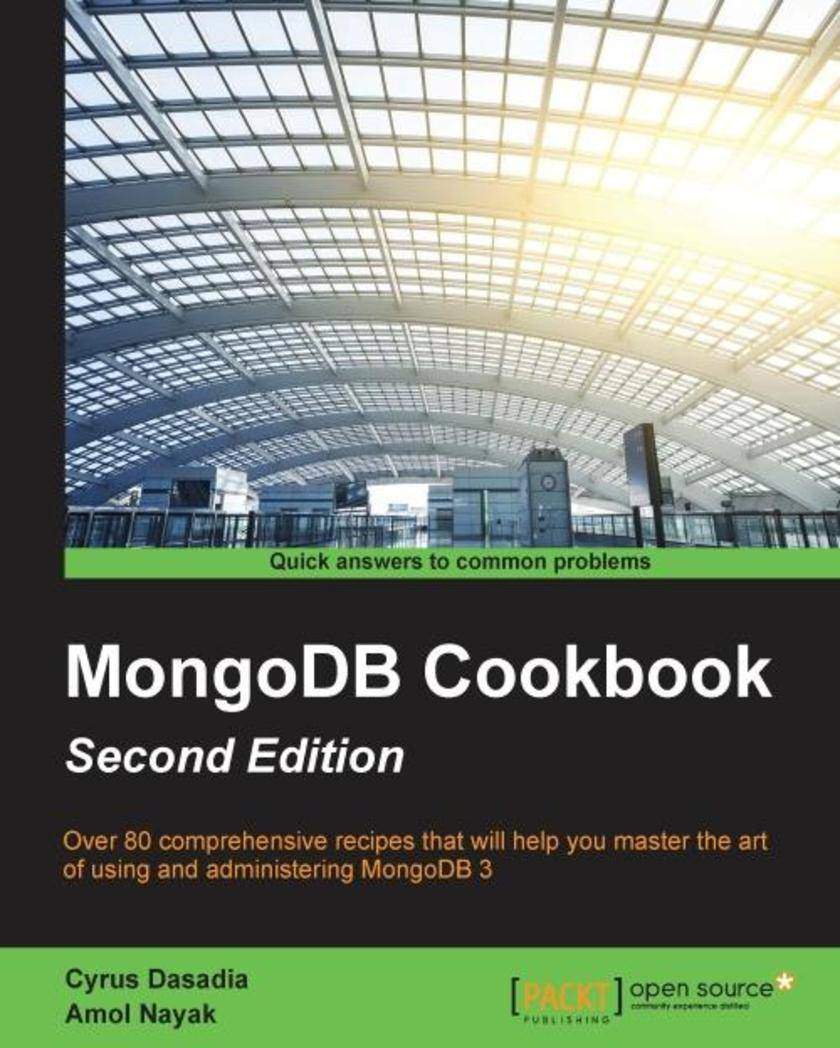
MongoDB Cookbook - Second Edition
¥80.65
Harness the latest features of MongoDB 3 with this collection of 80 recipes – from managing cloud platforms to app development, this book is a vital resourceAbout This BookGet to grips with the latest features of MongoDB 3Interact with the MongoDB server and perform a wide range of query operations from the shellFrom administration to automation, this cookbook keeps you up to date with the world’s leading NoSQL databaseWho This Book Is ForThis book is engineered for anyone who is interested in managing data in an easy and efficient way using MongoDB. You do not need any prior knowledge of MongoDB, but it would be helpful if you have some programming experience in either Java or Python.What You Will LearnInstall, configure, and administer MongoDB sharded clusters and replica setsBegin writing applications using MongoDB in Java and Python languagesInitialize the server in three different modes with various configurationsPerform cloud deployment and introduce PaaS for MongoDiscover frameworks and products built to improve developer productivity using MongoTake an in-depth look at the Mongo programming driver APIs in Java and PythonSet up enterprise class monitoring and backups of MongoDBIn DetailMongoDB is a high-performance and feature-rich NoSQL database that forms the backbone of the systems that power many different organizations – it’s easy to see why it’s the most popular NoSQL database on the market. Packed with many features that have become essential for many different types of software professionals and incredibly easy to use, this cookbook contains many solutions to the everyday challenges of MongoDB, as well as guidance on effective techniques to extend your skills and capabilities.This book starts with how to initialize the server in three different modes with various configurations. You will then be introduced to programming language drivers in both Java and Python. A new feature in MongoDB 3 is that you can connect to a single node using Python, set to make MongoDB even more popular with anyone working with Python. You will then learn a range of further topics including advanced query operations, monitoring and backup using MMS, as well as some very useful administration recipes including SCRAM-SHA-1 Authentication. Beyond that, you will also find recipes on cloud deployment, including guidance on how to work with Docker containers alongside MongoDB, integrating the database with Hadoop, and tips for improving developer productivity.Created as both an accessible tutorial and an easy to use resource, on hand whenever you need to solve a problem, MongoDB Cookbook will help you handle everything from administration to automation with MongoDB more effectively than ever before.Style and approachEvery recipe is explained in a very simple set-by-step manner yet is extremely comprehensive.
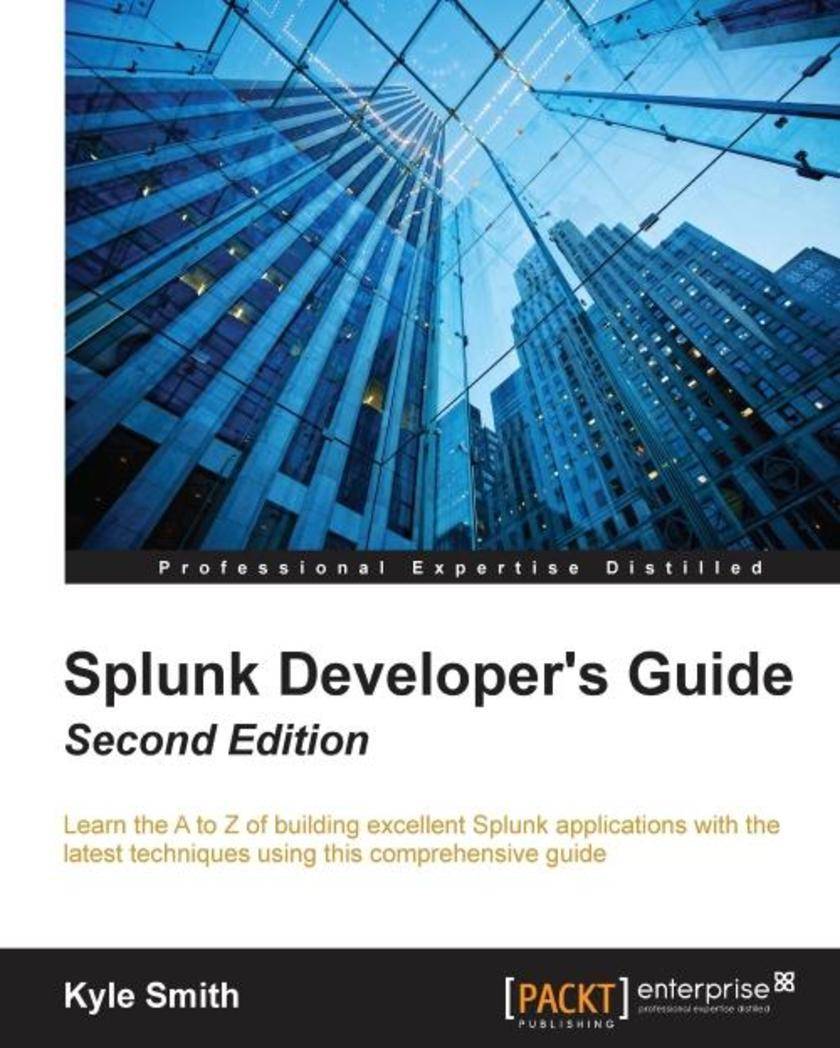
Splunk Developer's Guide - Second Edition
¥80.65
Learn the A to Z of building excellent Splunk applications with the latest techniques using this comprehensive guideAbout This BookThis is the most up-to-date book on Splunk 6.3 for developersGet ahead of being just a Splunk user and start creating custom Splunk applications as per your needsYour one-stop-solution to Splunk application developmentWho This Book Is ForThis book is for those who have some familiarity with Splunk and now want to learn how to develop an efficient Splunk application. Previous experience with Splunk, writing searches, and designing basic dashboards is expected.What You Will LearnImplement a Modular Input and a custom D3 data visualizationCreate a directory structure and set view permissionsCreate a search view and a dashboard view using advanced XML modulesEnhance your application using eventtypes, tags, and macrosPackage a Splunk application using best practicesPublish a Splunk application to the Splunk communityIn DetailSplunk provides a platform that allows you to search data stored on a machine, analyze it, and visualize the analyzed data to make informed decisions. The adoption of Splunk in enterprises is huge, and it has a wide range of customers right from Adobe to Dominos. Using the Splunk platform as a user is one thing, but customizing this platform and creating applications specific to your needs takes more than basic knowledge of the platform.This book will dive into developing Splunk applications that cater to your needs of making sense of data and will let you visualize this data with the help of stunning dashboards.This book includes everything on developing a full-fledged Splunk application right from designing to implementing to publishing. We will design the fundamentals to build a Splunk application and then move on to creating one. During the course of the book, we will cover application data, objects, permissions, and more. After this, we will show you how to enhance the application, including branding, workflows, and enriched data. Views, dashboards, and web frameworks are also covered.This book will showcase everything new in the latest version of Splunk including the latest data models, alert actions, XML forms, various dashboard enhancements, and visualization options (with D3). Finally, we take a look at the latest Splunk cloud applications, advanced integrations, and development as per the latest release.Style and approachThis book is an easy-to-follow guide with lots of tips and tricks to help you master all the concepts necessary to develop and deploy your Splunk applications.
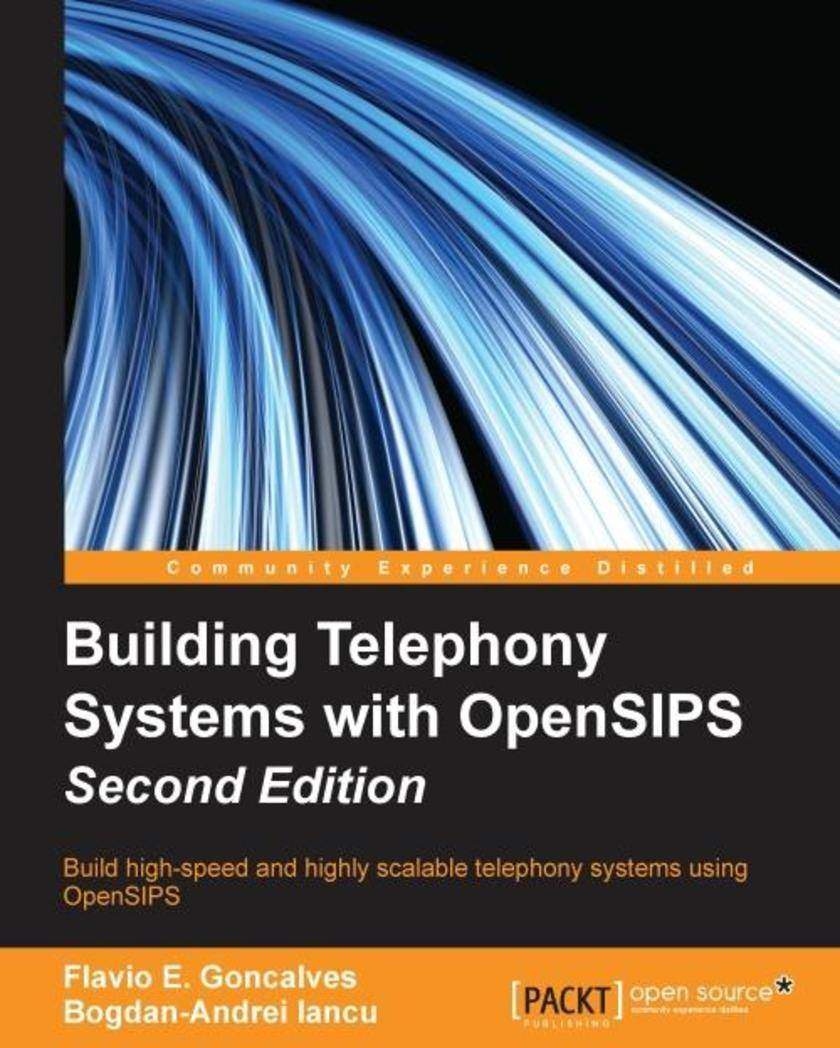
Building Telephony Systems with OpenSIPS - Second Edition
¥80.65
Build high-speed and highly scalable telephony systems using OpenSIPSAbout This BookInstall and configure OpenSIPS to authenticate, route, bill, and monitor VoIP callsGain a competitive edge using the most scalable VoIP technologyDiscover the latest features of OpenSIPS with practical examples and case studiesWho This Book Is ForIf you want to understand how to build a SIP provider from scratch using OpenSIPS, then this book is ideal for you. It is beneficial for VoIP providers, large enterprises, and universities. This book will also help readers who were using OpenSER but are now confused with the new OpenSIPS.Telephony and Linux experience will be helpful to get the most out of this book but is not essential. Prior knowledge of OpenSIPS is not assumed.What You Will LearnLearn to prepare and configure a Linux system for OpenSIPSFamiliarise yourself with the installation and configuration of OpenSIPSUnderstand how to set a domain and create users/extensionsConfigure SIP endpoints and make calls between themMake calls to and from the PSTN and create access control lists to authorize callsInstall a graphical user interface to simplify the task of provisioning user and system informationImplement an effective billing system with OpenSIPSMonitor and troubleshoot OpenSIPS to keep it running smoothlyIn DetailOpenSIPS is a multifunctional, multipurpose signalling SIP server. SIP (Session Initiation Protocol) is nowadays the most important VoIP protocol and OpenSIPS is the open source leader in VoIP platforms based on SIP. OpenSIPS is used to set up SIP Proxy servers. The purpose of these servers is to receive, examine, and classify SIP requests. The whole telecommunication industry is changing to an IP environment, and telephony as we know it today will completely change in less than ten years. SIP is the protocol leading this disruptive revolution and it is one of the main protocols on next generation networks. While a VoIP provider is not the only kind of SIP infrastructure created using OpenSIPS, it is certainly one of the most difficult to implement.This book will give you a competitive edge by helping you to create a SIP infrastructure capable of handling tens of thousands of subscribers.Starting with an introduction to SIP and OpenSIPS, you will begin by installing and configuring OpenSIPS. You will be introduced to OpenSIPS Scripting language and OpenSIPS Routing concepts, followed by comprehensive coverage of Subscriber Management. Next, you will learn to install, configure, and customize the OpenSIPS control panel and explore dialplans and routing. You will discover how to manage the dialog module, accounting, NATTraversal, and other new SIP services. The final chapters of the book are dedicated to troubleshooting tools, SIP security, and advanced scenarios including TCP/TLS support, load balancing, asynchronous processing, and more.A fictional VoIP provider is used to explain OpenSIPS and by the end of the book, you will have a simple but complete system to run a VoIP provider.Style and approachThis book is a step-by-step guide based on the example of a VoIP provider. You will start with OpenSIPS installation and gradually, your knowledge depth will increase.
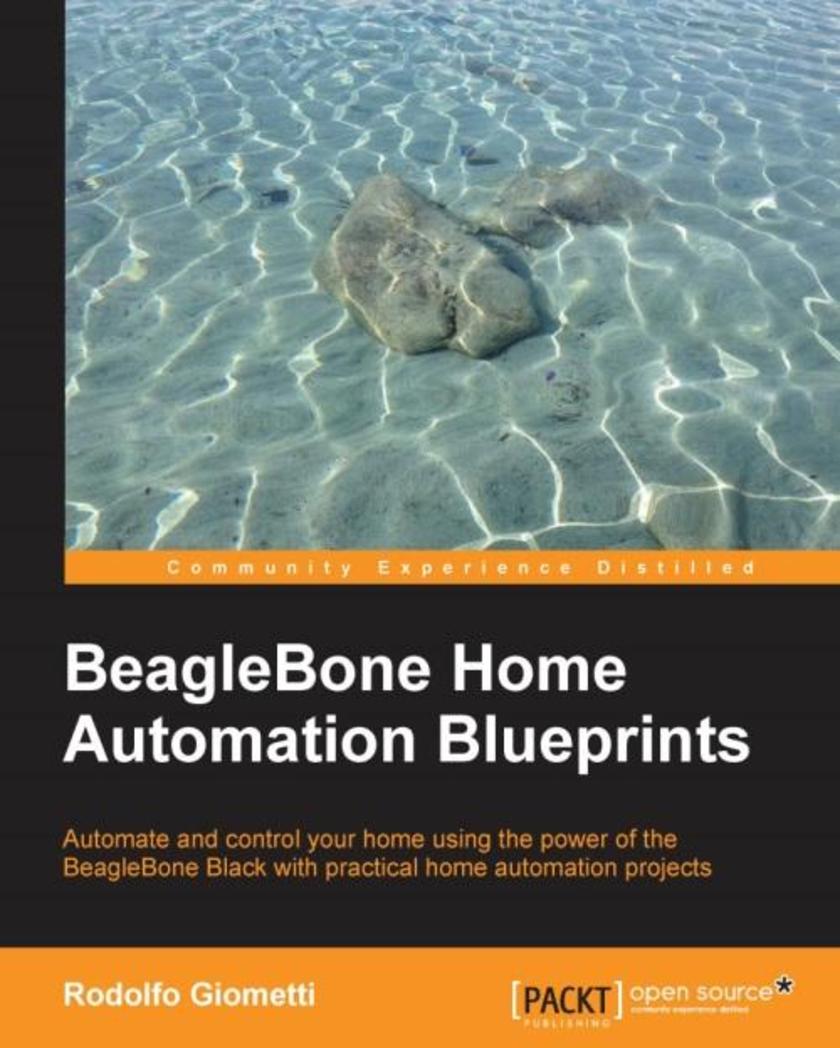
BeagleBone Home Automation Blueprints
¥80.65
Automate and control your home using the power of the BeagleBone Black with practical home automation projectsAbout This BookBuild, set up, and develop your circuits via step-by-step tutorial of practical examples, from initial board setup to device driver managementGet access to several kinds of computer peripherals to monitor and control your domestic environment using this guideThis book is spread across 10 chapters all focused on one practical home automation projectWho This Book Is ForThis book is for developers who know how to use BeagleBone and are just above the “beginner” level. If you want to learn to use embedded machine learning capabilities, you should have some experience of creating simple home automation projects.What You Will LearnBuild a CO (and other gas) sensor with a buzzer/LED alarm to signal high concentrationsLog environment data and plot it in a fancy mannerDevelop a simple web interface with a LAMP platformPrepare complex web interfaces in JavaScript and get to know how to stream video data from a webcamUse APIs to get access to a Google Docs account or a WhatsApp/Facebook account to manage a home automation systemAdd custom device drivers to manage an LED with different blinking frequenciesDiscover how to work with electronic components to build small circuitsUse an NFS, temperature sensor, relays, and other peripherals to monitor and control your surroundingsIn DetailBeagleBone is a microboard PC that runs Linux. It can connect to the Internet and can run OSes such as Android and Ubuntu. BeagleBone is used for a variety of different purposes and projects, from simple projects such as building a thermostat to more advanced ones such as home security systems.Packed with real-world examples, this book will provide you with examples of how to connect several sensors and an actuator to the BeagleBone Black. You’ll learn how to give access to them, in order to realize simple-to-complex monitoring and controlling systems that will help you take control of the house. You will also find software examples of implementing web interfaces using the classical PHP/HTML pair with JavaScript, using complex APIs to interact with a Google Docs account, WhatsApp, or Facebook. This guide is an invaluable tutorial if you are planning to use a BeagleBone Black in a home automation project.Style and approachThis step-by-step guide contains several home automation examples that can be used as base projects for tons of other home automation and control systems. Through clear, concise examples based on real-life situations, you will quickly get to grips with the core concepts needed to develop home automation applications with the BeagleBone Black using both the C language and high-level *ing languages such as PHP, Python, and JavaScript.
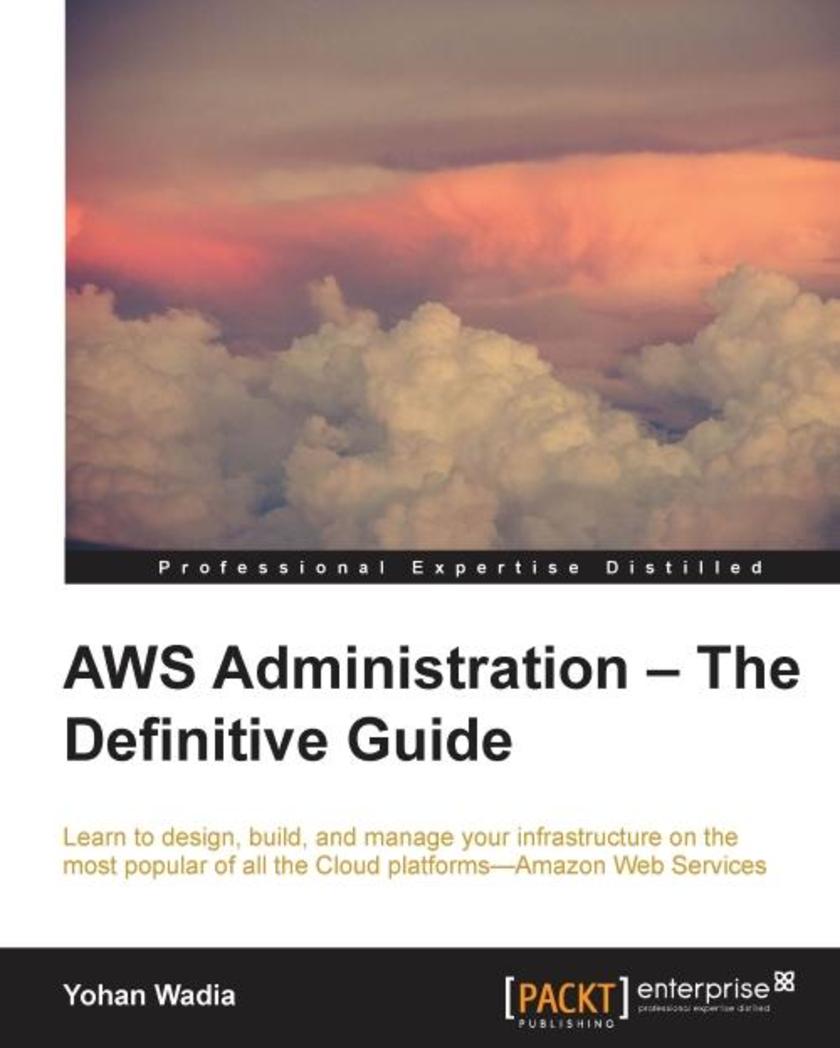
AWS Administration – The Definitive Guide
¥80.65
Learn to design, build, and manage your infrastructure on the most popular of all the Cloud platforms—Amazon Web ServicesAbout This BookLearn how to leverage various Amazon Web Services (AWS) components and services to build a secure, reliable, and robust environment to host your applications onDeep dive into the core AWS service offerings with hands-on tutorials, real-world use case scenarios, and best practicesA self-paced, systematic, and step-by-step guide to learning and implementing AWS in your own environmentWho This Book Is ForThis book is for those who want to learn and leverage AWS. Although no prior experience with AWS is required, it is recommended that you have some hands-on experienceofLinux, Web Services, and basic networkingWhat You Will LearnA brief introduction to Cloud Computing and AWS accompanied by steps to sign up for your first AWS accountCreate and manage users, groups, and permissions using AWSS Identity and Access Management servicesGet started with deploying and accessing EC2 instances, working with EBS Volumes and SnapshotsCustomize and create your very own Amazon Machine ImageDesign and deploy your instances on a highly secured, network isolated environment using Amazon VPCEffectively monitor your AWS environment using specialized alarms, custom monitoring metrics, and much moreExplore the various benefits of Database-as-a-Service offerings and leverage them using Amazon RDS and Amazon DynamoDBTake an in-depth look at what’s new with AWS, including EC2 Container Service and Elastic File SystemIn DetailAWS is at the forefront of Cloud Computing today. Many businesses are moving away from traditional datacenters and toward AWS because of its reliability, vast service offerings, lower costs, and high rate of innovation. Because of its versatility and flexible design, AWS can be used to accomplish a variety of simple and complicated tasks such as hosting multitier websites, running large scale parallel processing, content delivery, petabyte storage and archival, and lots more.Whether you are a seasoned sysadmin or a rookie, this book will provide you with all the necessary skills to design, deploy, and manage your applications on the AWS cloud platform. The book guides you through the core AWS services such as IAM, EC2, VPC, RDS, and S3 using a simple real world application hosting example that you can relate to. Each chapter is designed to provide you with the most information possible about a particular AWS service coupled with easy to follow hands-on steps, best practices, tips, and recommendations.By the end of the book, you will be able to create a highly secure, fault tolerant, and scalable environment for your applications to run on.Style and approach This in-depth and insightful guide is filled with easy-to-follow examples, real-world use cases, best practices, and recommendations that will help you design and leverage AWS.

Getting Started with ResearchKit
¥80.65
Enter the era of medical research using mobile devices with the help of this guide on ResearchKit!About This BookCreate a simple clinical research app using most aspects of ResearchKitBuild a simple survey with various data types with the results printed on the screen.A step-by-step guide introducing Apple's ResearchKit and techniques to incorporate it into various apps.Who This Book Is ForThis book is aimed at medical researchers with basic iOS coding knowledge and iOS developers looking to create clinical research apps.What You Will LearnLearn to create customized consent formGet introduced to two backend services: a simple backend server using Sinatra and Sage BridgeBuild a custom task (a conditional survey example) and a navigable taskGet an Overview of ResearchKit's open source repository and App CoreInteraction with the hardware of the device including the gyro and the motion sensorsLearn the basics of this revolutionary technologyGet introduced to the barebones app and learn to write your first codeIn DetailResearchKit is an open source software development framework from Apple that lets you easily create mobile applications for clinical research studies. ResearchKit provides you the ability to orchestrate the administration of tasks and recording of the results. ResearchKit provides tasks in order to perform informed consent, active tasks, and surveys.Starting with the basics of the ResearchKit framework, this books walks you through the steps of creating iOS applications that could serve as the basis of a clinical research mobile app.This book will introduce readers to ResearchKit and how to turn your iPhone into into a clinical research tool. The book will start off by installing and building the research framework in line with the researcher's needs; during this, the reader will learn to embed ResearchKit in the application and create a small task.After this, the book will go a little deeper into creating modules for surveys, consents, and so on. The book will also cover the various aspects of privacy and security with regard to participant data, and how to build dashboards for visualizing medical data and results in line with the researcher's requirements: data backends, JSON serialization and deserialization, and so on.Readers will be able to fully utilize ResearchKit for medical research, will be able to get more and more patients to participate in their surveys, and will gain insights from the surveys using the dashboards created.Style and approachA hands-on guide with ample screenshots for you to follow and learn about ResearchKit. Each topic is explained sequentially and placed in context so that you can get a better understanding of every step in the process of creating clinical research apps.
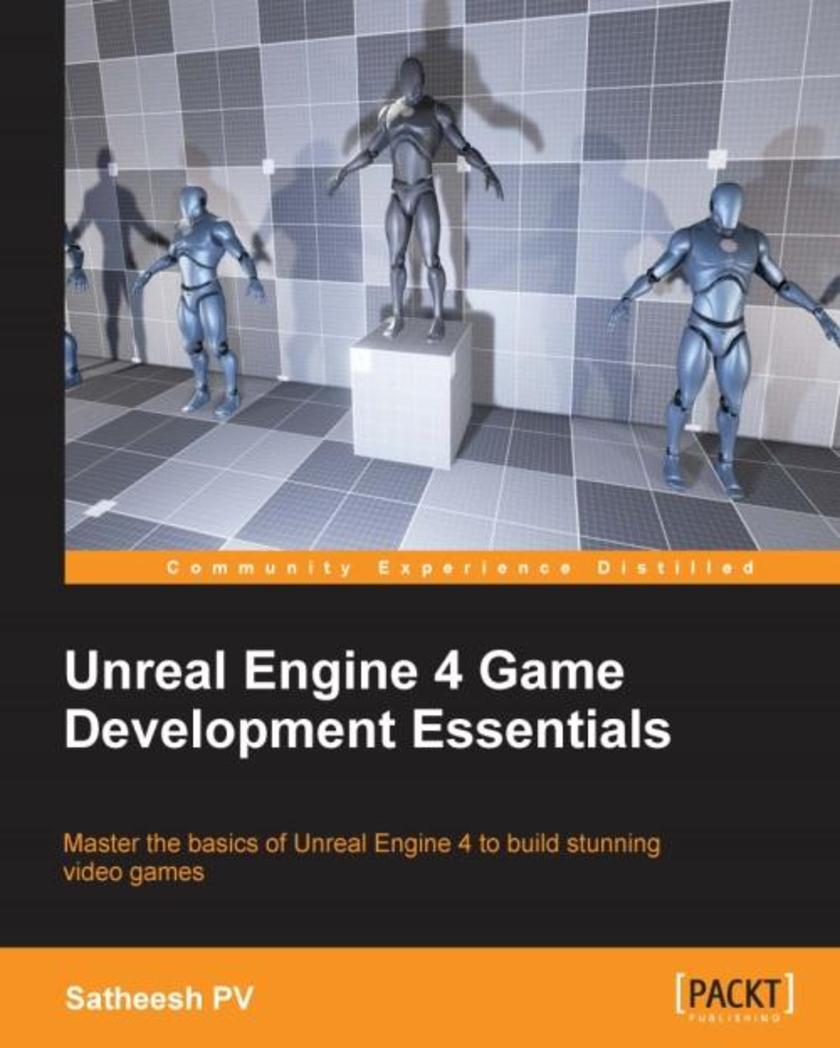
Unreal Engine 4 Game Development Essentials
¥80.65
Master the basics of Unreal Engine 4 to build stunning video gamesAbout This BookGet to grips with the user interface of Unreal Engine 4 and find out more about its various robust featuresCreate dream video games with the help of the different tools Unreal Engine 4 offersCreate video-games and fully utilize the power of Unreal Engine 4 to bring games to life through this step-by-step guideWho This Book Is ForIf you have a basic understanding of working on a 3D environment and you are interested in video game development, then this book is for you. A solid knowledge of C++ will come in handy.What You Will LearnDownload both the binary and source version of Unreal Engine 4 and get familiar with the UIGet to know more about the Material Editor and how it worksAdd a post process to the scene and alter it to get a unique look for your sceneAcquaint yourself with the unique and exclusive feature of Unreal Engine 4—BlueprintsFind out more about Static and Dynamic lighting and the difference between various lightsUse Matinee to create cut scenesCreate a health bar for the player with the use of Unreal Motion Graphics (UMG)Get familiar with Cascade Particle EditorIn DetailUnreal Engine 4 is a complete suite of game development tools that gives you power to develop your game and seamlessly deploy it to iOS and Android devices. It can be used for the development of simple 2D games or even stunning high-end visuals. Unreal Engine features a high degree of portability and is a tool used by many game developers today.This book will introduce you to the very popular Unreal 4 engine with hands-on instructions to build stunning video games. You will begin by creating a new project or prototype by learning the essentials of Unreal engine, then you’ll get an understanding of how the World Browser can help to improve performance of our game. Next, we’ll create a level of detailed models and materials to further improve performance. After that, you’ll see how to import textures, create different materials, and see what materials can do in terms of post-processing. Finally, you will get acquainted with the Paper2D tool and the blueprints system to further increase our project's performance with Engine’s scalability tools.Style and approachThis step-by-step guide will help you gain practical knowledge about Unreal Engine through detailed de*ions of all the tools offered by Unreal Engine.
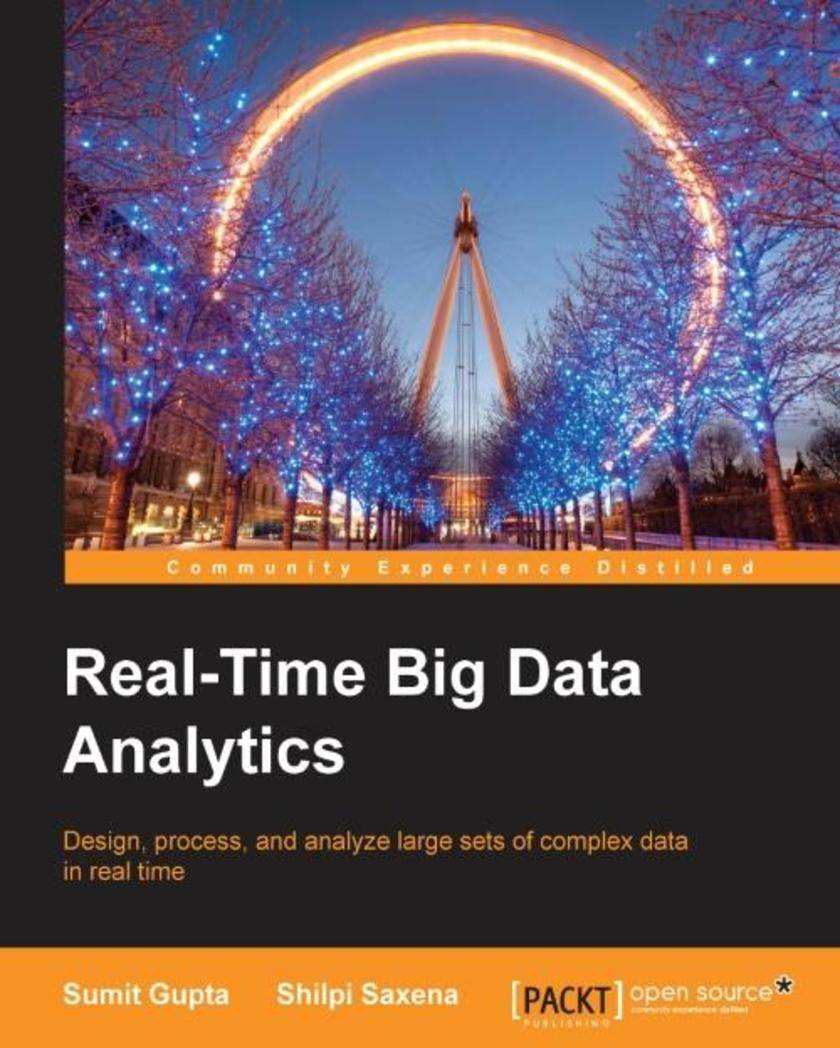
Real-Time Big Data Analytics
¥80.65
Design, process, and analyze large sets of complex data in real timeAbout This BookGet acquainted with transformations and database-level interactions, and ensure the reliability of messages processed using StormImplement strategies to solve the challenges of real-time data processingLoad datasets, build queries, and make recommendations using Spark SQLWho This Book Is ForIf you are a Big Data architect, developer, or a programmer who wants to develop applications/frameworks to implement real-time analytics using open source technologies, then this book is for you.What You Will LearnExplore big data technologies and frameworksWork through practical challenges and use cases of real-time analytics versus batch analyticsDevelop real-word use cases for processing and analyzing data in real-time using the programming paradigm of Apache StormHandle and process real-time transactional dataOptimize and tune Apache Storm for varied workloads and production deploymentsProcess and stream data with Amazon Kinesis and Elastic MapReducePerform interactive and exploratory data analytics using Spark SQLDevelop common enterprise architectures/applications for real-time and batch analyticsIn DetailEnterprise has been striving hard to deal with the challenges of data arriving in real time or near real time.Although there are technologies such as Storm and Spark (and many more) that solve the challenges of real-time data, using the appropriate technology/framework for the right business use case is the key to success. This book provides you with the skills required to quickly design, implement and deploy your real-time analytics using real-world examples of big data use cases.From the beginning of the book, we will cover the basics of varied real-time data processing frameworks and technologies. We will discuss and explain the differences between batch and real-time processing in detail, and will also explore the techniques and programming concepts using Apache Storm.Moving on, we’ll familiarize you with “Amazon Kinesis” for real-time data processing on cloud. We will further develop your understanding of real-time analytics through a comprehensive review of Apache Spark along with the high-level architecture and the building blocks of a Spark program.You will learn how to transform your data, get an output from transformations, and persist your results using Spark RDDs, using an interface called Spark SQL to work with Spark.At the end of this book, we will introduce Spark Streaming, the streaming library of Spark, and will walk you through the emerging Lambda Architecture (LA), which provides a hybrid platform for big data processing by combining real-time and precomputed batch data to provide a near real-time view of incoming data.Style and approachThis step-by-step is an easy-to-follow, detailed tutorial, filled with practical examples of basic and advanced features.Each topic is explained sequentially and supported by real-world examples and executable code snippets.
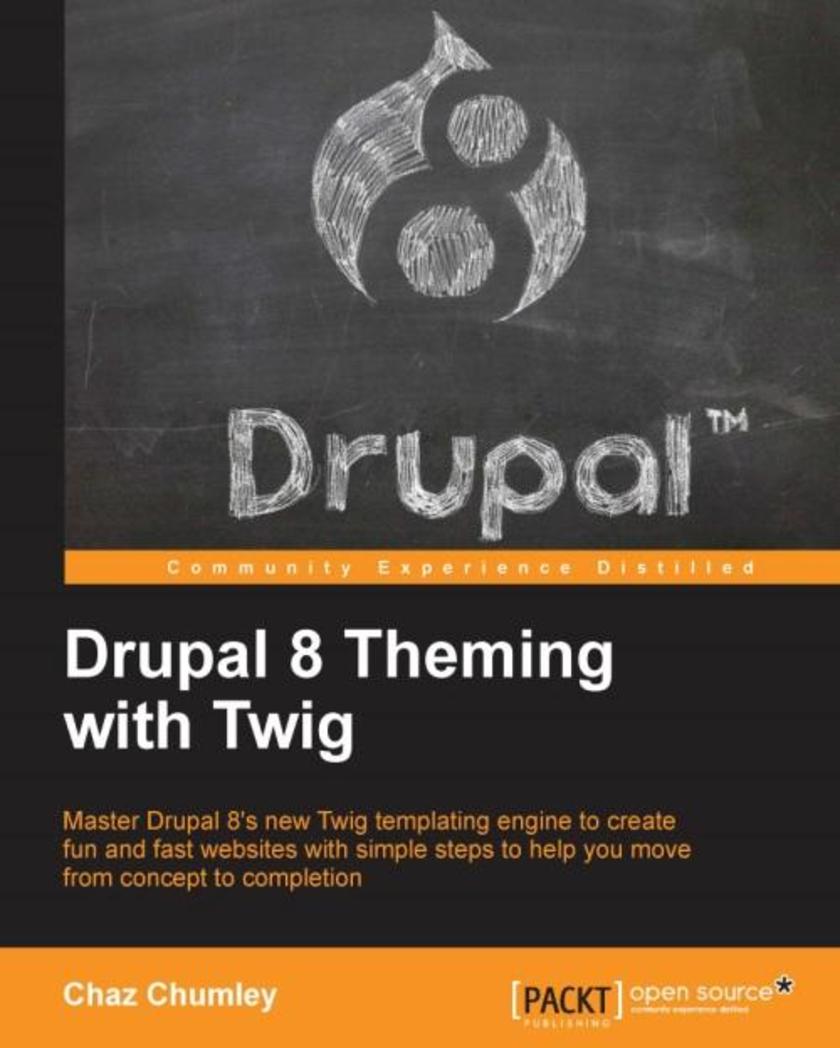
Drupal 8 Theming with Twig
¥80.65
Master Drupal 8’s new Twig templating engine to create fun and fast websites with simple steps to help you move from concept to completion About This Book Create beautiful responsive Drupal 8 websites using Twig Quickly master theme administration, custom block layouts, views, and the Twig template structure A step-by-step guide to the most common approaches in web design Who This Book Is For This book is intended for front-end developers, designers, and anyone who is generally interested in learning all the new features of Drupal 8 theming. Discover what has changed from Drupal 7 to Drupal 8 and immerse yourself in the new Twig PHP templating engine. Familiarity with HTML5, CSS3, JavaScript, and the Drupal Admin interface would be helpful. Prior experience with setting up and configuring a standalone development environment is required as we will be working with PHP and MySQL. What You Will Learn Navigate the Drupal 8 Admin interface Build custom block layouts with reusable and fieldable blocks Create subthemes based on the Bartik and Classy base themes Construct a responsive theme with Twitter Bootstrap Work with the new Twig PHP templating engine Configure Drupal for Twig debugging Enable preprocessing of Twig variables Develop a theme from scratch following a step-by-step project outline In Detail Drupal 8 is an open source content management system and powerful framework that helps deliver great websites to individuals and organizations, including non-profits, commercial, and government around the globe. This new release has been built on top of object-oriented PHP and includes more than a handful of improvements such as a better user experience, cleaner HTML5 markup, a new templating engine called Twig, multilingual capabilities, new configuration management, and effortless content authoring. Drupal 8 will quickly become the new standard for deploying content to both the web and mobile applications. However, with so many new changes, it can quickly become overwhelming knowing where to start and how to quickly. Starting from the bottom up, we will install, set up, and configure Drupal 8. We’ll navigate the Admin interface so you can learn how to work with core themes and create new custom block layouts. Walk through a real-world project to create a Twig theme from concept to completion while adopting best practices to implement CSS frameworks and JavaScript libraries. We will see just how quick and easy it is to create beautiful, responsive Drupal 8 websites while avoiding the common mistakes that many front-end developers make. Style and approach Drupal 8 Theming with Twig is intended for front-end developers, designers, and anyone who is generally interested in learning all the new features of Drupal 8 theming. Discover what has changed from Drupal 7 to Drupal 8 and immerse yourself in the new Twig PHP templating engine. Familiarity with HTML5, CSS3, JavaScript, and the Drupal Admin interface would be helpful. Prior experience with setting up and configuring a standalone development environment is required as we will be working with PHP and MySQL.
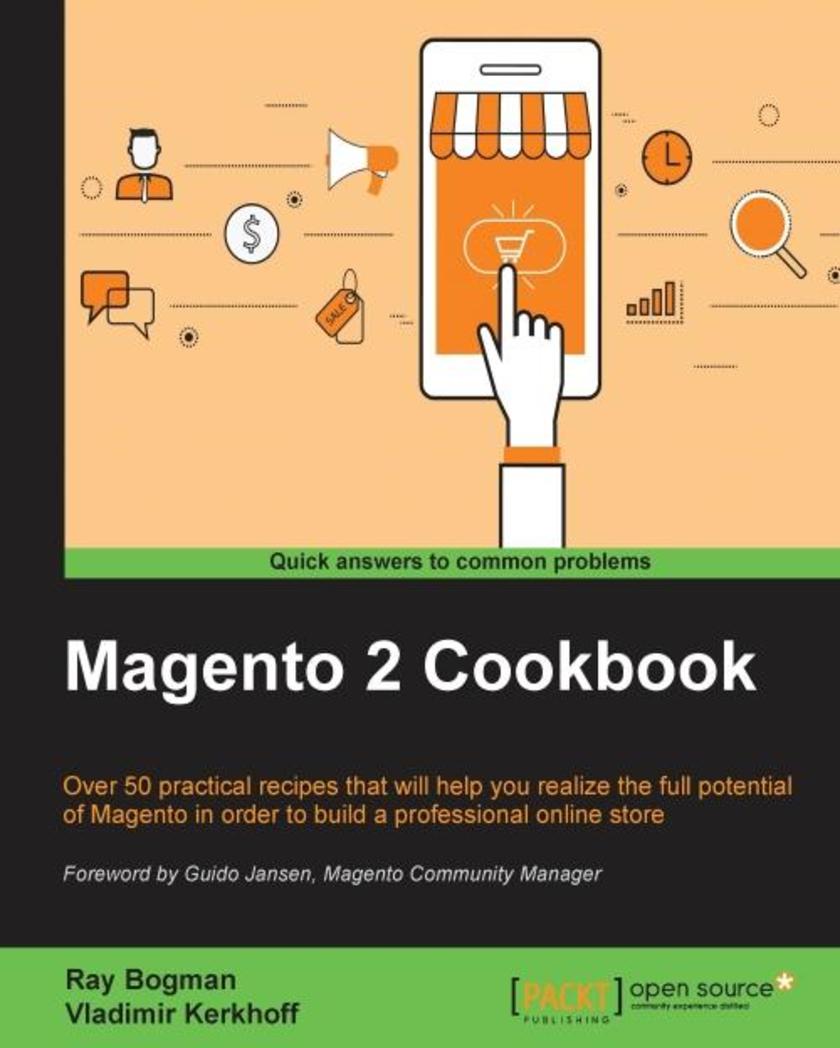
Magento 2 Cookbook
¥80.65
Over 50 practical recipes that will help you realize the full potential of Magento in order to build a professional online store About This Book Take advantage of the latest features in Magento 2 to set up an e-commerce store that fits your business needs Packed with several advanced recipes, not just to manage your online store, but to extend and design it as well Written in a cookbook style, you can pick and choose your recipe to carry out your day- to- day Magento store tasks Who This Book Is For The book is for existing Magento users who want to gain further expertise and insights into managing, designing, and extending their online store in Magento to fit their business needs. Working knowledge of Magento and basic familiarity with programming is expected. What You Will Learn Set up a Magento 2 project on Apache or Nginx. Transfer your Magento 1 database to Magento 2 using the Magento 2 system tools. Boost the performance of Magento 2 by enabling different types of caching. Build a Magento 2 multi-store by creating a root catalog, subdirectories, and products. Create and manage pages, blocks, and front-end apps. Manage your Magento store by setting up the correct TAX rules. Design custom themes within the Magento 2 framework. Create basic and advanced extensions using Magento 2. In Detail Magento 2 is an open source e-commerce platform that has all the functionality to function from small to large online stores. It is preferred by developers and merchants due to its new architecture, which makes it possible to extend the functionalities with plugins, a lot of which are now created by the community. This merchant and developer guide is packed with recipes that cover all aspects of Magento 2. The recipes start with simple how-to’s then delve into more advanced topics as the book progresses. We start with the basics of setting up a Magento 2 project on Apache or Nginx. Next, you will learn about basics including system tools and caching to get your Magento 2 system ready for the real work. We move on to simple tasks such as managing your store and catalog configuration. When you are familiar with this, we cover more complex features such as module and extension development. Then we will jump to the final part: advanced Magento 2 extensions. By the end of this book, you’ll be competent with all the development phases of Magento 2 and its most common elements. Style and approach Step by step guide for real world tasks for Magento users to gain a more advanced insight on managing, extending and designing their e-commerce store to fit their business needs.




 购物车
购物车 个人中心
个人中心



